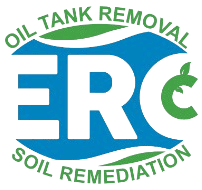How Long Does an Oil Tank Last?
 Many homes have tanks that were installed prior to the late ‘90’s. These tanks have a life expectancy of 15-20 years, which means that, today, the majority of them are ready to be removed, remediated, or replaced. Early oil tanks were made of pure steel and these continue to be the most common type of existing tank today. Current homeowners are purchasing tanks that are made of fiberglass or tanks that are constructed of polyethylene, but surrounded by a steel outer shell. These tanks constructed in 2000 or later are expected to last well past 30 years, but that does not mean that they should remain on a property. There are many factors that influence the life expectancy of an oil tank, whether below or above ground, is cause for serious consideration for home owners and home buyers.
Many homes have tanks that were installed prior to the late ‘90’s. These tanks have a life expectancy of 15-20 years, which means that, today, the majority of them are ready to be removed, remediated, or replaced. Early oil tanks were made of pure steel and these continue to be the most common type of existing tank today. Current homeowners are purchasing tanks that are made of fiberglass or tanks that are constructed of polyethylene, but surrounded by a steel outer shell. These tanks constructed in 2000 or later are expected to last well past 30 years, but that does not mean that they should remain on a property. There are many factors that influence the life expectancy of an oil tank, whether below or above ground, is cause for serious consideration for home owners and home buyers.
Why Be Concerned About Your Oil Tank?
It is important for all homeowners, or potential homeowners, to be aware of the age of any oil tank on their property. An oil tank can appear to be in excellent condition, as the aging process of such equipment happens from the inside out as water enters the tank from condensation. As the inner tank corrodes, it can leave rust in the bottom of the tank, which can quickly clog filters. The outside of a tank can appear to be solid and strong, yet, because of the erosion of the walls of the unit from the interior, maintain very little structural integrity. Polyethylene tanks have the least chance of corrosion and leakage due to the non-rust factor of the plastic, as well as the fact that they remain impenetrable to weather. Still, many homeowners make the decision to remove these tanks because the only way to ensure that a property never encounters an oil leak is to remove the tank from the property altogether.
Outdoor vs. Indoor Oil Tanks
Outdoor, underground tanks experience corrosion faster than tanks located in any other area, due to the effect that the soil can have on the outer shell of the tank. An outdoor, above ground tank has the second lowest life expectancy due to exposure to temperature and weather extremes. Indoor tanks, when consistently maintained, enjoy the longest life. In all cases, the types of steel or other materials used in the tank will vary the life of the tank. Other factors include the average climate and weather of the area, the level of salt in the air (tanks at the beach corrode at a much faster rate than those inland), and the location of the tank, which impacts the wear and tear on the outer shell. The generally agreed upon age at which homeowners begin to consider replacing their tanks is twenty years. It is important, however, to make sure that oil tanks, no matter where they are located on a property, are inspected every three to five years for safety.
How We Can Help
If you find that you are the owner of a property with a tank that was installed prior to 2000, ERC can remove your tank, and thanks to our flat rate, there will be no extra costs involved. Whether your tank is pre-2000 and about to perforate, has already leaked into the soil on your property, or whether you simply feel as though the time is right to convert from oil to natural gas, ERC has got you covered.




